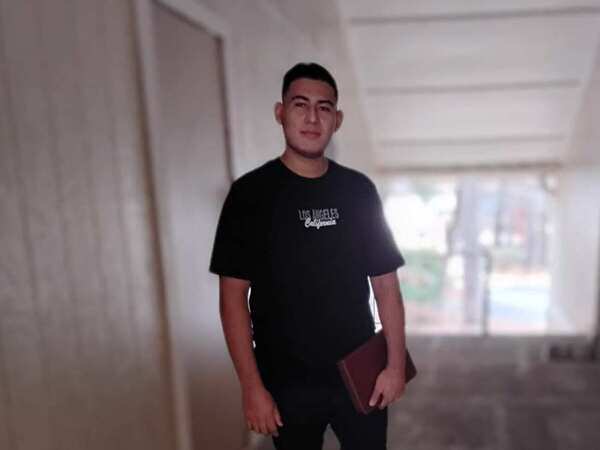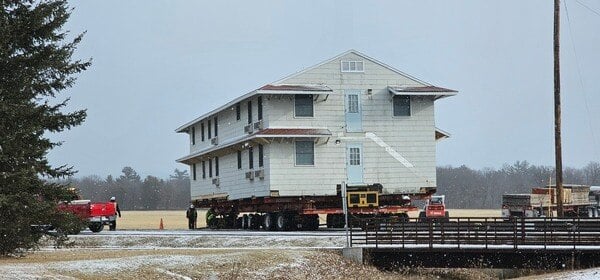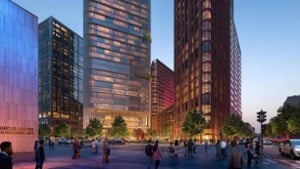Hyundai Motor Group has made a groundbreaking decision to invest $5.8 billion in a new manufacturing facility in Louisiana. This first-of-its-kind site marks Hyundai’s inaugural North American steel facility, establishing a fully integrated, made-in-America supply chain to support its automotive manufacturing operations across the United States.
The ultra-low carbon steel production plant will be located on approximately 1,700 acres in Donaldsonville, Louisiana, anchoring the RiverPlex MegaPark on the Westbank of the Mississippi River in Ascension Parish. At approximately 17,000 acres, RiverPlex is the largest undeveloped tract along the deep-water Mississippi River. Hyundai Steel Company (HSC), a member of Hyundai Motor Group, is expected to create more than 1,300 direct new jobs with an average salary of $95,000. Louisiana Economic Development estimates the project will result in about 4,100 indirect new jobs, for a total of 5,400 potential new jobs in the Capital Region.
“Hyundai’s decision to invest nearly $6 billion in Ascension Parish speaks volumes about Louisiana’s skilled workforce, robust infrastructure and our ability to compete for innovative manufacturing facilities,” Louisiana Governor Jeff Landry said. “This announcement makes clear that Louisiana’s manufacturing sector is roaring back, thanks to our historic tax reforms, our business-friendly approach and the many competitive advantages our state has to offer international powerhouses like Hyundai.”
HSC plans to import an estimated 3.6 million tons of iron ore annually to the facility. Completed coils will be shipped out via rail and truck to customers, including Hyundai Motor Company, Kia, and U.S. automakers. The largest portion of steel manufactured in Louisiana will be sent to Hyundai Motor Company’s vehicle manufacturing plants throughout the U.S. The mill is expected to produce 2.7 million metric tons of steel annually.
The state-of-the-art electric arc furnace (EAF) steel mill is expected to produce 70% lower emissions than traditional blast furnaces, aligning with the Hyundai Motor Group’s mission to..Read More
AEC News You Can Use Blog
Construction
Exclusive content for the architectural, construction and engineering industries
- Tom Taubenheim
- May 7, 2025
- Tom Taubenheim
- April 9, 2025
- Tom Taubenheim
- February 12, 2025
- Tom Taubenheim
- February 5, 2025
- Tom Taubenheim
- January 30, 2025
- Tom Taubenheim
- October 2, 2024
- Tom Taubenheim
- September 25, 2024
- Tom Taubenheim
- September 18, 2024
- Tom Taubenheim
- March 20, 2024
- Tom Taubenheim
- January 3, 2024
LA Governor Jeff Landry & LED Secure $5.8 Billion Hyundai Steel Plant
Topics: Construction, Building Products, Steel
Construction worker who fell to death wasn’t wearing harness-ANF
A newly released police report is shedding more light on what happened the day a construction worker fell to his death in downtown Atlanta last week.
At around 10:36 a.m. on Thursday, police were called to 327 Mitchell Street SW, an apartment building development that sits over The Gulch and is part of a project from Centennial Yards.
The victim, identified as 20-year-old Lauinier Bonilla, was working on the 19th floor when at least one witness saw him fall. The report said Bonilla wasn’t wearing personal protective equipment, including a safety harness.
Law enforcement later found safety glasses and a hard hat scattered on the ground.
Bonilla “succumbed to injuries consistent with falling from a significant height,” the report said. His body was removed from the scene by the Fulton County Medical Examiner’s Office.
The man’s employer said he would report the incident to the Occupational Safety and Health Administration (OSHA), according to the report.
Bonilla was employed by a subcontractor working for the CIM Group. Atlanta News First is working with a spokesperson at the CIM Group to get more details on what happened and what safety protocols were in place at the time of the accident.
According to Bonilla’s family, he was only on the job for two weeks. They said the subcontractor is paying to return his body to his home country of Honduras
Meanwhile, a video shared by another coworker shows workers leaving donations in a collection box set up inside the building to help the family cover funeral expenses.
“Because of the gusts of wind and the lack of safety equipment, a tragedy happened,” Nestor Ramirez, one of Bonilla’s coworkers, said. “The wind knocked him down off the ladder and he fell from the 19th floor.”
The developer of the high rise, CIM Group, shared the following statement: “Our heartfelt condolences are with all those who are affected and..Read More
Topics: Construction, Construction Accident
Contractors move first of World War II-era barracks at Ft McCoy-DVIDS
Contractors successfully moved a barracks building Jan. 22 from its resting area of 80-plus years to a new location on Fort McCoy’s cantonment area.
It was the first of five barracks buildings on the installation cantonment area's 1600 block that are being moved during January and February 2025 while the ground is frozen, Army Corps of Engineers officials said.
Devooght Building Movers of Manitowoc, Wis., is the contractor doing the building moves.
These buildings will eventually be reset at another area of the post so new construction can begin in their current location on new officer quarters.
Master Planner Brian Harrie with the Fort McCoy Directorate of Public Works said a plan was previously worked out with the U.S. Army Corps of Engineers for the contractor to move the five old barracks buildings to the 500 block of Fort McCoy in this move.
Four other barracks buildings also were moved from the 1600 block to other areas in 2023. Those four buildings are now operational in their new locations in the 1700, 1800, and 2100 blocks on the post.
In 2023 during the first barracks move operations, that was the first time an effort like that took place at Fort McCoy, Fort McCoy officials said.
Looking back, all five of the current buildings being moved were originally built 83 years ago in 1942 during the construction of Fort McCoy's cantonment area. An article in the Aug. 28, 1942, edition of The Real McCoy newspaper discussed the actual construction of the cantonment area and these buildings.
“Actual building and grading operations for the erection of the hundreds of buildings began March 20, 1942, although the original survey by a corps of engineers was made in July 1941. Authorization for construction was given by the War Department on Feb. 9, 1942.”
The article also states, “Each of the new buildings is of the most modern..Read More
Topics: Construction, Housing
HGTV’s ‘Fixer to Fabulous’ Hosts Settle Lawsuit Before Trial-US Weekly
HGTV stars Dave and Jenny Marrs have settled a remodeling lawsuit shortly before its scheduled trial date.
The Fixer to Fabulous hosts’ companies Jupiter Rentals and Marrs Construction were sued for breach of contract and warranty by couple Matthew and Sarah McGrath in February 2023, per local CBS affiliate 5NEWS.
The McGraths claimed that the Marrs failed to perform upgrades to their home. According to court documents obtained by the outlet, the McGraths alleged that the parties previously agreed to install missing cabinet hardware, replace broken windows and repair hardwood floors in the kitchen, among other repairs.
“As of August 28, 2022, not a single item on the list of repairs had been performed,” the complaint read, per 5NEWS. “Since that time, the defendants by and through Dave Marrs have attempted some of the repairs listed, but … several of the attempts to repair have caused more damage to the house.”
In Marss’ response, the twosome claimed that the McGraths refused to allow their companies’ agents or subcontractors access to the property.
Seven months after the lawsuit was initially filed, the court ordered mediation between the two parties. However the discussions “failed miserably” per a filing made by the plaintiffs.
In March 2024, a filing revealed that the McGrath’s property had nearly two dozen code violations after the house was inspected by another group of contractors. Dave, 44, reportedly stated in a deposition that he disagreed with the other home improvement specialists about the home’s alleged issues.
After not making any headway in the previous discussions, the Marrs and McGraths were scheduled to go to trial on Monday, January 27. However, 5NEWS reported that the parties reached a settlement on Friday, January 24.
“Come now plaintiffs, Matthew and Sarah McGrath, and defendants, Marrs Construction, Inc. and Jupiter Rentals, LLC, by and through their respective attorneys, and stipulate..Read More
Topics: Construction, Construction Lawsuit, Home Remodeling
60 lawsuits allege flaws in homebuilder D.R. Horton’s SC houses-Yahoo
Approximately 60 lawsuits have been filed in Richland, Lexington and Horry counties alleging construction flaws in residential houses built by major national homebuilder D. R. Horton.
The lawsuits allege various construction flaws relating to roofs, I-joists, flashing, siding, weather resistant barriers and cladding (protective coverings), depending on the house. Some defects allegedly can allow water intrusion, the lawsuits allege.
They charge D.R. Horton with negligence, breach of warranties and breach of contract, and in some cases, violations of South Carolina’s Unfair Trade Practices Act. In some cases, D.R. Horton sold homes to people knowing there were defects, some lawsuits allege. The plaintiffs seek actual and punitive damages.
D.R. Horton sold homes to plaintiffs “that required tight construction schedules with insufficient resources and labor to build a top-quality Residence,” says one lawsuit, filed by Sam and Kristina Prest about their Little River home.
D.R. Horton, a Fortune 500 company whose stock is traded on the New York Stock Exchange, describes itself as the largest housebuilder in the nation. It is headquartered in Texas.
The company is currently building houses in 125 markets in 36 states, including South Carolina, according to its 2024 annual report. In South Carolina, its projects are in areas around Charleston, Columbia, Greenville, Spartanburg, Hilton Head and Myrtle Beach.
After being contacted by The State, a D.R. Horton official emailed a statement saying it doesn’t comment on ongoing litigation.
But the official said the company “is aware of the claims and actively engaging with these homeowners and their counsel” and added, “We have retained independent third-party engineers and experts to investigate the claims.”
“D.R. Horton stands behind the homes we build and remains willing to work with our homeowners to address any valid and warrantable concerns,” the statement said.
The current lawsuits are not the first against D.R. Horton in South Carolina.
Last year, D.R. Horton, subcontractors and suppliers reached a $16.1 million settlement in a class action lawsuit alleging construction defects in more than 200 houses in a..Read More
Topics: Construction, Construction Lawsuit, Home Builder
Recent Supreme Court ruling may help fight impact fees-BANG
Jonathon Yu is not a professional developer, but he is interested in building new housing.
In 2023, the 29-year-old product manager submitted plans to Sunnyvale to raze the modest 1,000-square-foot bungalow he bought a year earlier and replace it with a three-story, five-unit multifamily building.
He paid a few thousand dollars for an architect to draw up plans, then a few thousand more to the city for application fees. His parents called him insane for spending so much, but Yu had the money, and he wanted to build housing.
He didn’t have the funds for what Sunnyvale demanded next: To get the permit for the $3 million project, he would need to pay $300,000 in impact fees, one-time charges imposed by local governments to fund improvements to infrastructure like roads, parks and schools.
“What stopped me were the impact fees,” Yu said. “If I would have completed the structure, it would’ve been the most affordable new housing in the area.”
Across the Bay Area, impact fees like those Yu encountered often surpass six figures per unit — and developers have had little leeway to challenge them.
But a recent ruling by the U.S. Supreme Court could limit the impact fees that California can levy, which some say could lower the barriers to building new housing.
The case involved California landowner George Sheetz, who challenged the $23,420 fee El Dorado County required to fund road expansions the county said were necessitated by the small home he wanted to build. Sheetz sued, arguing the Constitution’s taking clause limits what the government can take without fair compensation.
Previous cases have required such fees to be “roughly proportional” to a development’s impact. But California courts have held local governments to a lower standard
In a unanimous decision, the Supreme Court found that was incorrect, and remanded the case to the state court for reconsideration. It’s unclear what new standards the California court will.. Read More
Topics: Construction, Housing, Lawsuit, Home Builder, Developer
Wisconsin Set to Receive World's Tallest Mass Timber Tower-Newsweek
$700 million redevelopment in Milwaukee could be set to result in the tallest mass timber building in the world and the tallest building in Wisconsin.
The project, led by green developers The Neutral Project and designed by Michael Green Architecture (MGA), is set to transform the Marcus Performing Arts Center parking garage into a mixed-use development featuring up to 750 residential units, 190,000 square feet of office space, 40,000 square feet of retail space, 300 hotel rooms, 1,100 structured parking spaces, and public plazas and walkways.
"As mayor, I have not been shy about my goal to grow our city's population to one million Milwaukeeans," said Mayor Cavalier Johnson.
"To do that, we need to be aggressive and reach for new heights. This project will help us do just that, literally aiming to set local and global records, but just as importantly add density and activity to an underutilized City-controlled parcel in downtown Milwaukee. It also represents a forward-thinking Milwaukee, open to outside investment and ideas, and I thank The Neutral Project for their confidence in Milwaukee's future."
The Marcus Center seeks to build on Milwaukee's record – the city is already home to the world's tallest mass timber tower – the 25-story Ascent MKE.
A press release shared with Newsweek suggested that The Marcus Center could be up to 55 stories. The Neutral Project is also developing The Edison, which is set to be 32 stories tall.
A mass timber tower is a type of high-rise building constructed primarily using engineered wood products, such as cross-laminated timber (CLT), glulam (glued laminated timber), and laminated veneer lumber (LVL).
These materials are engineered for strength and stability, allowing for the construction of tall structures that were traditionally built using concrete and steel.
Mass timber towers are considered more environmentally friendly compared to traditional construction methods. Wood.. Read More & See Videos
Topics: Construction, Architecture, Mass Timber
Videos show crane falling, crashing onto car in Fort Lauderdale-NBC6
A construction worker died after a portion of a crane fell onto the Southeast 3rd Avenue bridge Thursday in downtown Fort Lauderdale, crushing a car and injuring three more people.
The incident happened at around 4:30 p.m. on the bridge over the New River, near Southeast 4th Street.
Fort Lauderdale fire officials said in a news conference said a construction crew was in the process of "stepping the crane" by adding sections to a crane to make it taller when a platform fell from the building, along with pieces of the crane.
The construction worker fell with the crane section, causing fatal injuries, officials said. The crane itself remained secured to the building.
The crane section landed on the nearby bridge, damaging at least two vehicles. At least two other people who were in vehicles were transported to the hospital, one in stable condition and the other with minor injuries. A third person was also treated for their injuries at the scene.
Footage from Chopper 6 showed the crushed vehicle as well as another damaged car nearby. Several police units and paramedics responded to the scene.
Mark Cerezin's Tesla was damaged by the falling crane piece. He said it bounced off his car and landed on the vehicle next to him.
"I was driving and I felt a compression, and I looked up and I saw the blue structure coming down, and I slammed on my brakes. It sheared off the front of my Tesla and all the airbags went off — and I’m very lucky to be alive," Cerezin said.
One woman who lives in an apartment across from where the collapse happened said she saw the crane falling from the sky and hit the corner of a building. She described the screams she heard from construction workers as "unsettling."
"It was really shocking," said the woman.. Read More & See Videos
Topics: Construction, Construction Accident
Appleton construction company switches from hard hats to helmets-NBC26
When you’re on the job site, safety is everything. In years past, you would start with a hard hat.
But, not these guys.
The Boldt Company did away with hard hats in favor of safety helmets. While unsure at first, workers have adapted to the changes.
“We switched to safety helmets here at the Boldt company," says Safety Operations Manager Kristin Clements.
This is in light of research that shows construction workers receive more traumatic brain injuries than other industries in the United States.
Clements helped lead the change.
“We recognize the advancing technologies and protection out there for the employees,” said Clements.
They are no longer using hard hats. Instead, safety helmets are now the new head protection gear of choice for Boldt.
However, workers like weld shop foreman William F. Cummings had to adapt to the changes at first.
"It was something that for guys that I’ve worked with in construction for 20-25 years that have used the same hardhat," Cummings noted. "Then, the new ones got launched out and right away there was, you know, confusion and a lot didn’t like to switch right away.
Boldt's safety helmet was launched back in 2022. Now, workers like Cummings say they like the helmets better than hardhats.
“Being able to switch out the face shields, welding helmets they’re a lot more breathable," Cummings said, giving credit to the design. "They are a lot more comfortable.”..Read More Here
Topics: Construction Safety, Construction
See 12-year-old drive stolen construction forklift on hour-long chase
On 11/25/23 at approximately 6:45pm, officers responded to Forsythe Middle School (1564 Newport Road) for a report of a juvenile attempting to steal a construction vehicle. At 6:48pm officers located the stolen vehicle being driven southbound on Brooks Street near Pearl Street without any lights on. Multiple officers initiated a pursuit of the vehicle at speeds of 15 to 20mph with emergency lights and sirens on. During the pursuit, the driver of the stolen vehicle traveled through the Georgetown Boulevard neighborhood, striking approximately ten parked vehicles.
At approximately 7:18pm officers terminated the pursuit when the vehicle traveling northbound on Nixon Road went across the M-14 bridge. At that time deputies with the Washtenaw County Sheriff’s Office picked up the pursuit and followed the vehicle until the driver stopped at approximately 7:53pm in the area of M-14 and Gotfredson. The driver was identified as a 12-year-old boy from Ann Arbor and was taken into custody and later lodged at the juvenile detention center. No one was injured in the pursuit.
Preliminary investigation revealed the juvenile gained access to the construction vehicle at Forsyth Middle School. The vehicle was unlocked with the keys hidden inside the cab. The vehicle is a Construction Genie GTH-636 Telehandler, equipped with a forklift. This type of vehicle can weigh up to 35,000 pounds.
This was a very dangerous situation that could’ve easily ended with serious injuries. The incident remains an active and ongoing criminal investigation.
Topics: Construction, Theft, Job Site
Heading Module -CTA Title
Lorem ipsum dolor sit amet, consectetur adipiscing elit. Suspendisse varius enim in eros elementum tristique.
Lorem Ipsum
Aenean leo ligula, porttitor eu, consequat vitae, eleifend ac, enim. Aliquam lorem ante, dapibus in, viverra quis. Aenean leo ligula, porttitor eu, consequat vitae, eleifend ac, enim. Aliquam lorem ante, dapibus in, viverra quis










